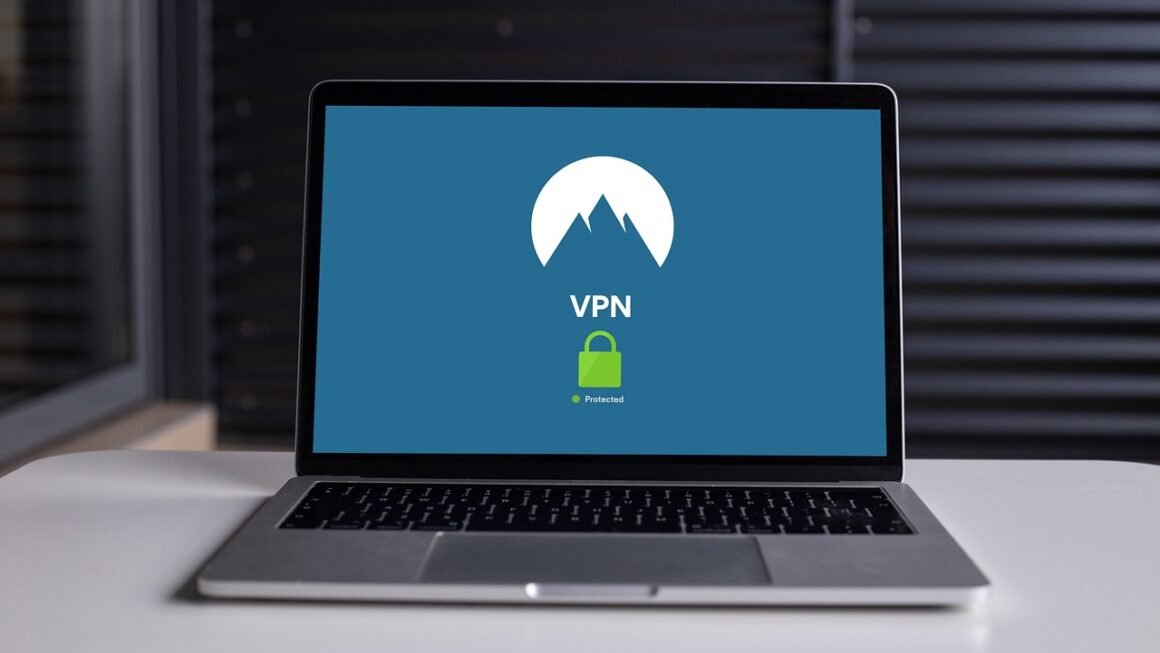In today’s interconnected digital landscape, businesses of all sizes face an ever-increasing barrage of cyber threats. Securing your network’s entry points – the endpoints like laptops, desktops, smartphones, and servers – is no longer optional; it’s a crucial necessity for protecting sensitive data, maintaining business continuity, and ensuring regulatory compliance. Without a robust endpoint security strategy, your organization is vulnerable to a wide range of attacks, from malware and phishing to ransomware and advanced persistent threats (APTs). This blog post will delve into the intricacies of endpoint security, providing a comprehensive understanding of its components, challenges, and best practices.
What is Endpoint Security?
Endpoint security refers to the practices and technologies used to protect network endpoints from malicious activity. It’s a comprehensive approach that involves identifying, analyzing, and mitigating threats before they can compromise your systems. Unlike traditional security measures that focus on perimeter defense, endpoint security addresses the unique vulnerabilities presented by individual devices.
Understanding the Endpoint Landscape
- Diversity of Devices: Today’s endpoint landscape is incredibly diverse, encompassing a wide range of devices, operating systems, and configurations. This heterogeneity presents a significant challenge for security teams, as each device requires tailored protection.
- Mobile Workforce: The rise of remote work has further expanded the endpoint landscape, with employees accessing corporate resources from personal devices and unsecured networks. This increases the attack surface and makes it more difficult to maintain control over data security.
- Internet of Things (IoT): The proliferation of IoT devices, such as smart sensors and connected appliances, adds another layer of complexity to endpoint security. These devices often have limited security capabilities and can be easily exploited by attackers.
Why is Endpoint Security Important?
- Data Protection: Endpoints are often the primary target for cybercriminals seeking to steal sensitive data, such as customer information, financial records, and intellectual property. Endpoint security helps to prevent data breaches and protect your organization’s valuable assets.
- Business Continuity: A successful cyberattack can disrupt business operations, leading to downtime, lost revenue, and reputational damage. Endpoint security helps to prevent these disruptions by mitigating threats before they can cause harm.
- Compliance: Many industries are subject to strict regulations regarding data security and privacy. Endpoint security helps organizations comply with these regulations and avoid costly fines and penalties. For example, HIPAA for healthcare or PCI DSS for payment card data.
- Reduced IT Costs: By preventing malware infections and other security incidents, endpoint security can help reduce IT costs associated with remediation, data recovery, and incident response.
- Improved Productivity: A secure endpoint environment allows employees to work more efficiently without fear of malware infections or data loss.
Key Components of Endpoint Security
A robust endpoint security strategy encompasses a variety of technologies and processes working in concert to protect your devices.
Endpoint Detection and Response (EDR)
- Real-time Monitoring: EDR solutions continuously monitor endpoints for suspicious activity and collect detailed data on system events.
- Threat Detection: EDR uses advanced analytics and machine learning to identify potential threats, such as malware, ransomware, and advanced persistent threats (APTs).
- Incident Response: EDR provides tools and capabilities for responding to security incidents, including isolating infected devices, removing malware, and restoring data.
- Example: A user downloads a seemingly harmless file, but the EDR agent detects suspicious code execution. The EDR system automatically quarantines the file, alerts the security team, and prevents the malware from spreading.
Endpoint Protection Platform (EPP)
- Antivirus/Antimalware: EPP solutions include traditional antivirus and antimalware capabilities to detect and remove known threats.
- Firewall: EPP includes firewall protection to block unauthorized access to endpoints.
- Intrusion Prevention System (IPS): EPP employs IPS technology to detect and block malicious network traffic targeting endpoints.
- Device Control: EPP offers device control features to restrict the use of removable media and other peripherals that could introduce malware.
- Example: EPP might block a user from connecting an unauthorized USB drive to their computer, preventing the potential introduction of malware from that drive.
Mobile Device Management (MDM)
- Device Enrollment: MDM allows organizations to enroll mobile devices (smartphones and tablets) into a management system.
- Policy Enforcement: MDM enables the enforcement of security policies on mobile devices, such as password requirements, encryption settings, and application restrictions.
- Remote Wipe: MDM provides the ability to remotely wipe data from lost or stolen mobile devices.
- Application Management: MDM facilitates the deployment and management of applications on mobile devices.
- Example: An employee loses their company-issued smartphone. The IT department uses MDM to remotely wipe the device, preventing unauthorized access to sensitive data.
Data Loss Prevention (DLP)
- Data Discovery: DLP solutions can identify and classify sensitive data stored on endpoints.
- Data Monitoring: DLP monitors data in use, in motion, and at rest to detect and prevent unauthorized data leakage.
- Policy Enforcement: DLP enforces policies to prevent users from copying, printing, or emailing sensitive data to unauthorized locations.
- Reporting and Auditing: DLP provides reporting and auditing capabilities to track data usage and identify potential data breaches.
- Example: A user attempts to email a file containing sensitive customer data to a personal email address. The DLP system detects the violation and blocks the email, preventing the data from leaving the organization’s control.
Implementing an Effective Endpoint Security Strategy
Implementing an effective endpoint security strategy requires a comprehensive approach that considers your organization’s specific needs and risks.
Risk Assessment
- Identify Assets: Identify the critical assets that need to be protected, such as customer data, financial information, and intellectual property.
- Assess Threats: Assess the potential threats that could compromise your endpoints, such as malware, phishing, and ransomware.
- Evaluate Vulnerabilities: Evaluate the vulnerabilities in your endpoint environment, such as outdated software, weak passwords, and unpatched systems.
- Prioritize Risks: Prioritize the risks based on their likelihood and potential impact.
Policy Development
- Define Security Policies: Develop clear and concise security policies that outline acceptable use of endpoints, data protection requirements, and incident response procedures.
- Communicate Policies: Communicate the security policies to all employees and ensure that they understand their responsibilities.
- Enforce Policies: Enforce the security policies through technical controls and regular audits.
Technology Deployment
- Choose the Right Solutions: Select endpoint security solutions that meet your organization’s specific needs and budget. Consider factors such as features, performance, and ease of use.
- Implement Solutions: Implement the selected solutions in a phased approach, starting with the most critical endpoints.
- Configure Solutions: Configure the solutions to meet your organization’s specific security requirements.
Monitoring and Response
- Monitor Endpoints: Continuously monitor endpoints for suspicious activity and security incidents.
- Respond to Incidents: Develop an incident response plan to address security incidents quickly and effectively.
- Remediate Infections: Remediate malware infections and other security incidents promptly to prevent further damage.
- Regularly Update Security Software: Ensure all security software is up-to-date with the latest threat definitions and security patches.
Challenges in Endpoint Security
Despite the availability of advanced endpoint security solutions, organizations still face several challenges in protecting their endpoints.
Resource Constraints
- Budget Limitations: Implementing and maintaining an effective endpoint security strategy can be expensive, especially for small and medium-sized businesses.
- Staffing Shortages: Many organizations lack the in-house expertise to effectively manage and monitor endpoint security.
- Complexity: The complexity of modern endpoint security solutions can be overwhelming for IT staff.
Evolving Threats
- Advanced Malware: Cybercriminals are constantly developing new and sophisticated malware that can evade traditional security defenses.
- Zero-Day Exploits: Zero-day exploits target vulnerabilities that are unknown to the vendor, making them difficult to defend against.
- Social Engineering: Social engineering attacks, such as phishing, can trick users into revealing sensitive information or installing malware.
User Behavior
- Negligence: Users may unknowingly engage in risky behavior, such as clicking on malicious links or downloading suspicious files.
- Bypassing Security Controls: Users may attempt to bypass security controls, such as disabling antivirus software or using unauthorized devices.
- Lack of Awareness: Users may lack awareness of security threats and best practices.
Conclusion
Endpoint security is a critical component of any comprehensive cybersecurity strategy. By implementing the right technologies, developing strong policies, and educating users about security threats, organizations can significantly reduce their risk of a successful cyberattack. While challenges remain, a proactive and well-managed endpoint security program is essential for protecting your data, maintaining business continuity, and ensuring compliance. Regularly reviewing and updating your endpoint security strategy is paramount to staying ahead of evolving threats and maintaining a strong security posture.



